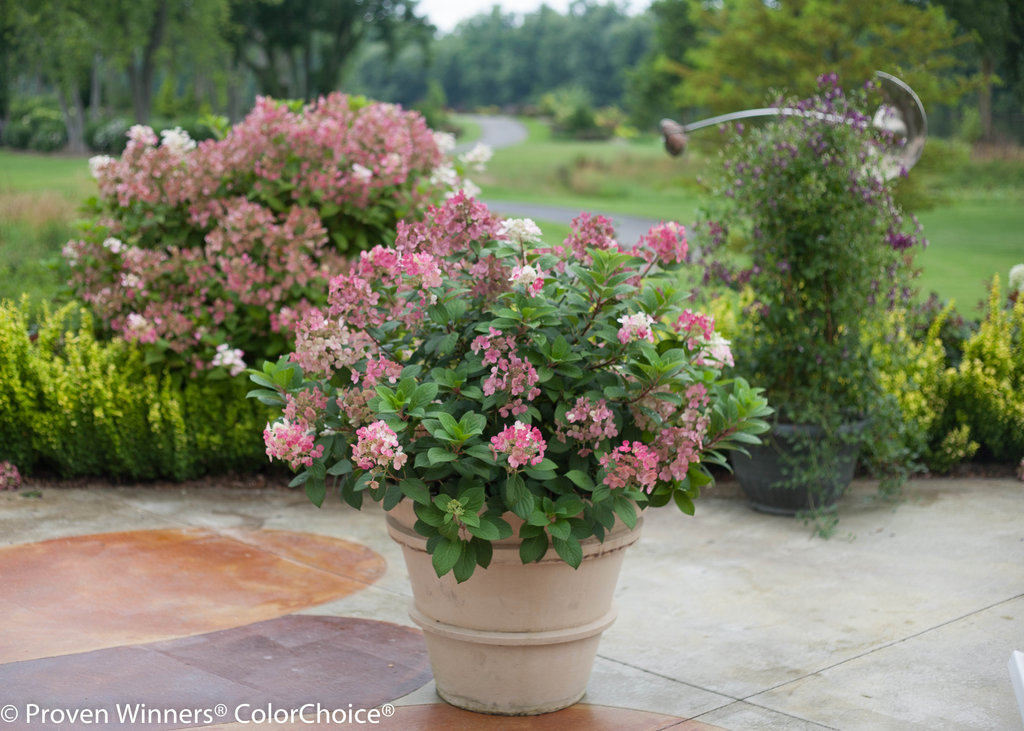
Hydrangea (/ha?'dre?nd?i?/;common brands hydrangea or hortensia) is a genus of 70-75 types of flowering plant life native to southern and eastern Asia (China, Japan, Korea, the Himalayas, and Indonesia) and the Americas. Probably the greatest species diversity is in eastern Asia, china notably, Japan, and Korea. The majority are shrubs 1 to 3 meters high, but some are small trees and shrubs, as well as others lianas getting up to 30 m (98 foot) by climbing up trees and shrubs. They can be either evergreen or deciduous, though the cultivated temperate types are all deciduous greatly.Having been introduced to the Azores, H. macrophylla is now very common, particularly on Faial, which is known as the "blue island" due to the multitude of hydrangeas present on the island.Life cycleHydrangea flowers are created from planting season to late fall months; they expand in flowerheads (corymbs or panicles) frequently at the ends of the stems.

Typically the flowerheads contain two types of bouquets: small non-showy flowers in the center or interior of the flowerhead, and large, showy bouquets with large multi-colored sepals (tepals). These showy blossoms are extended in a band often, or to the exterior of the small flowers. Vegetation in untamed populations have few to nothing of the showy flowers typically, while cultivated hydrangeas have been bred and picked to have significantly more of the larger type blooms.There are two flower arrangements in hydrangeas with Corymb style inflorescens, which include the commonly grown "bigleaf hydrangea"--Hydrangea macrophylla. Mophead blooms are large round flowerheads resembling pom-poms or, as the name indicates, the comparative brain of a mop. In contrast, lacecap flowers bear round, flat flowerheads with a center core of subdued, small plants ornamented by outer bands of bigger blooms having showy tepals or sepals.
The blossoms of some viburnums and rhododendrons can show up, at first glance, much like those of some hydrangeas.Colors and dirt acidityIn most varieties the blossoms are white, however in some species (notably H. macrophylla), can be blue, red, red, light crimson, or dark crimson. In these kinds the colour is affected by the existence of light weight aluminum ions which are available or tied up depending after the land pH. For H. h and macrophylla. serrata cultivars, the flower color can be dependant on the relative acidity of the soil: an acidic soil (pH below 7), will supply aluminum ions and typically produce flowers that are blue to purple, whereas an alkaline soil (pH above 7) will tie up aluminum ions and bring about pink or red flowers.
This is the effect of a color change of the bloom pigments in the occurrence of aluminium ions which may be adopted into hyperaccumulating plants.[6] Bringing down the pH of potting soils or mixes usually will not change the bloom color to blue, because these soils have no aluminum ions. The ability to blue or green a hydrangea is affected by the cultivar also. Some plants are selected for his or her ability to be blued, while others are bred and selected to be red, pink or white. The flower color of all other Hydrangea species is not affected by aluminum and can't be changed or shifted. Hydrangeas also have a nickname called 'Change Rose'.
Pin Quick Fire Hydrangea on Pinterest
Little Quick Fire® Hardy Hydrangea Hydrangea paniculata Proven

Recent Photos The Commons 20under20 Galleries World Map App Garden

Tidak ada komentar:
Posting Komentar